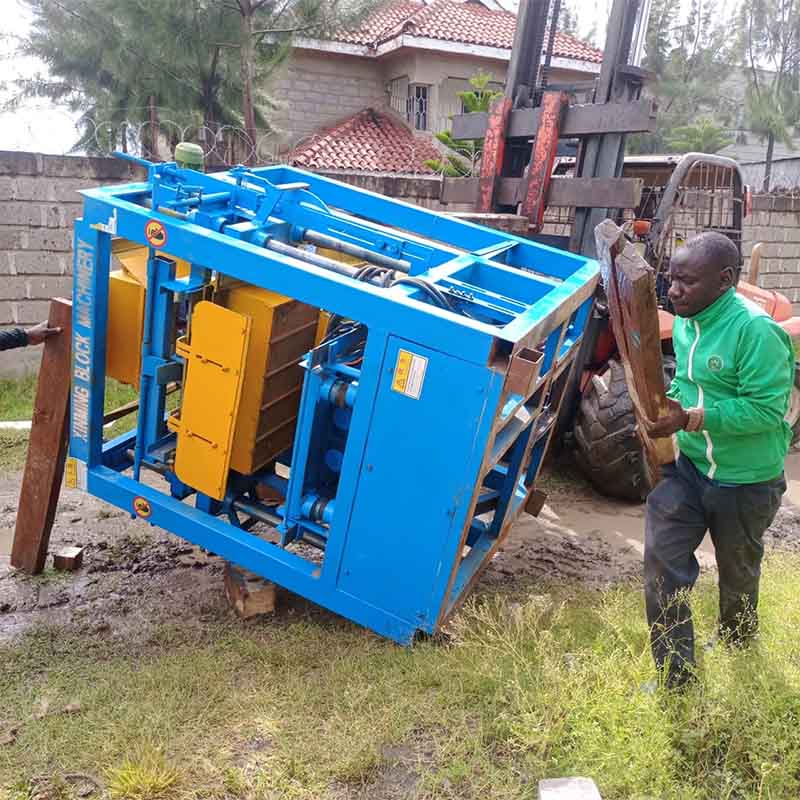
Title: **Market Analysis of Full-Automatic Block Products in the Green Building Sector**
Introduction:
In the wake of global environmental concerns and the increasing shift towards sustainable construction practices, the green building sector has witnessed substantial growth. Within this paradigm, full-automatic block products have emerged as key components, offering both efficiency in construction and environmental sustainability. This market analysis delves into the current landscape of full-automatic block products within the green building sector, exploring market trends, drivers, challenges, and future prospects.
1. **Growing Demand for Sustainable Construction:**
The green building sector has experienced a surge in demand driven by a heightened awareness of environmental issues and a desire for energy-efficient and eco-friendly structures. Full-automatic block products align perfectly with these aspirations, as they often involve the use of recycled materials and contribute to enhanced energy efficiency in buildings.
2. **Advantages of Full-Automatic Blocks in Green Construction:**
Full-automatic block products, such as autoclaved aerated concrete (AAC) blocks, concrete masonry units (CMUs), and other precast concrete elements, offer several advantages in the context of green building. These blocks are manufactured with precision, resulting in reduced waste during construction. Additionally, their inherent thermal insulation properties contribute to energy efficiency in buildings, reducing the need for extensive heating or cooling systems.
3. **Regulatory Support and Certification:**
Governments and regulatory bodies worldwide are increasingly promoting sustainable construction practices. Many countries offer incentives, tax breaks, or subsidies for green building initiatives, creating a conducive environment for the adoption of full-automatic block products. Certification programs such as LEED (Leadership in Energy and Environmental Design) further validate the sustainability credentials of these products, boosting their market acceptance.
4. **Technological Innovations in Full-Automatic Block Production:**
Technological advancements in the manufacturing processes of full-automatic block products contribute to improved quality, durability, and sustainability. Innovations such as the use of recycled aggregates, carbon capture technologies, and energy-efficient production methods enhance the environmental profile of these blocks. As technology continues to evolve, the market is likely to witness even more sustainable and resource-efficient manufacturing practices.
5. **Cost Considerations and Return on Investment:**
While the initial cost of full-automatic block products may be higher compared to traditional construction materials, the long-term benefits often outweigh the upfront expenses. The energy savings, reduced maintenance costs, and the overall sustainability of green buildings contribute to a favorable return on investment. As awareness of these long-term benefits grows, the market for full-automatic block products is expected to expand.
6. **Challenges and Barriers:**
Despite the positive outlook, there are challenges hindering the widespread adoption of full-automatic block products in the green building sector. Resistance to change, lack of awareness among builders and architects, and concerns about the initial cost are some of the barriers that need to be addressed. Education and outreach initiatives, coupled with clear communication of the long-term benefits, can help overcome these obstacles.
7. **Market Trends and Future Prospects:**
The market for full-automatic block products in the green building sector is expected to witness continued growth in the coming years. Increasing urbanization, a focus on sustainable infrastructure, and the integration of smart technologies in construction are key trends influencing the market. Additionally, as more countries implement stringent environmental regulations, the demand for green building materials, including full-automatic blocks, is likely to rise.
8. **Global and Regional Dynamics:**
The market for full-automatic block products varies across regions due to differences in construction practices, regulations, and economic factors. While developed regions are leading in terms of adoption, emerging economies are also showing increasing interest in sustainable construction, presenting new opportunities for market expansion.
Conclusion:
The market for full-automatic block products in the green building sector is at the intersection of sustainability, technology, and regulatory support. As the construction industry continues its journey towards greener practices, the demand for these products is poised to grow. Overcoming challenges and fostering awareness will be critical to realizing the full potential of full-automatic block products in sustainable construction. The convergence of environmental responsibility and technological innovation makes full-automatic blocks a key player in shaping the future of the green building sector.
